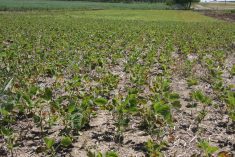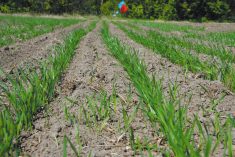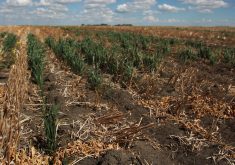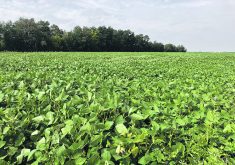Industry analysts continue their positive outlook for the Canadian feeder cattle market, despite a widespread drought in the United States that has corn prices soaring and feeder cattle futures falling.
The worst drought in the central U.S. in 25 years is slashing corn yields and drying up pastures. With no sign of a reprieve and grass getting drier, cow-calf producers are hoping to ship cattle to feedlots.
However, feedlots, burdened with rising corn prices, are not eager to fill up their pens.
Chicago August feeder futures that had climbed to more than $161 US per hundredweight in early June have been falling and were trading around $144.50 July 9.
Read Also

U.S. softens fees on Chinese shipping
The U.S. starts charging new fees on Chinese ships on Oct. 14. What are the ramifications for their ag exports?
However, Canadian cattle producers are enjoying more favourable grazing conditions and forage supplies this summer. While feed barley prices in Western Canada have increased, the market isn’t facing the same pressures as in the U.S.
As recently as late May, when she spoke to Saskatchewan Stock Growers, Cattle Trends Inc. president Anne Dunford was forecasting higher demand and prices for Canadian cattle.
While conditions in the U.S. have changed since then, Dunford remains cautiously optimistic.
“We can’t forget that our prices are still driven out of the U.S. market. To say that the market is lower in Canada, that’s not the case. But it’s because we’re hardly moving anything right now because conditions are good,” she said.
“It’s a (feeder) market that’s not being tested much. There’s still lots of unknowns as we head into fall.”
Western Canada’s cattle industry will watch the U.S. drought’s effect on Canadian feed barley prices, which tend to follow corn prices, she said.
“We’ve got potential higher feed costs than we were anticipating, even with a larger barley crop, according to StatsCan,” she said.
Cash barley prices in Lethbridge, which had fallen to average $219 per tonne in mid-June, had risen to $231 by July 6, pressured up by rising corn.
Canfax reported July 6 that Canadian feedlots are reporting big losses on feeding cattle as grain prices rise.
Brian Perillat, senior market analyst at Canfax, said as well as affecting feed prices, the U.S. drought might also result in fewer feeders being exported.
“We were potentially going to see a lot more exports of feeder cattle out of Canada,” he said.
“One of the maybe somewhat positive parts of this is Canada might maintain its competitiveness in terms of feeding cattle here. It could keep more feeder cattle in Canada, which is good for our feedlots and processing sector to utilize as much of our infrastructure as possible.”
Both analysts said current conditions indicate the Canadian cattle industry will continue to move toward herd expansion. While not predicting a boom, they said domestic demand should stay strong.
“There has been some forward pricing of feeder cattle through the year. I think producers have been proactive to these higher prices in some cases. Depending on what you have or haven’t done, you may just be patient through this period of time to see what all comes to fruition as we head into fall,” said Dunford.
“At the same time, I think if you wanted to go out and do some pricing into for, say, delivering yearling grass cattle, I do think there’s opportunities to pre-price cattle for August and September for delivery at steady prices, no lower than they have been.”

















